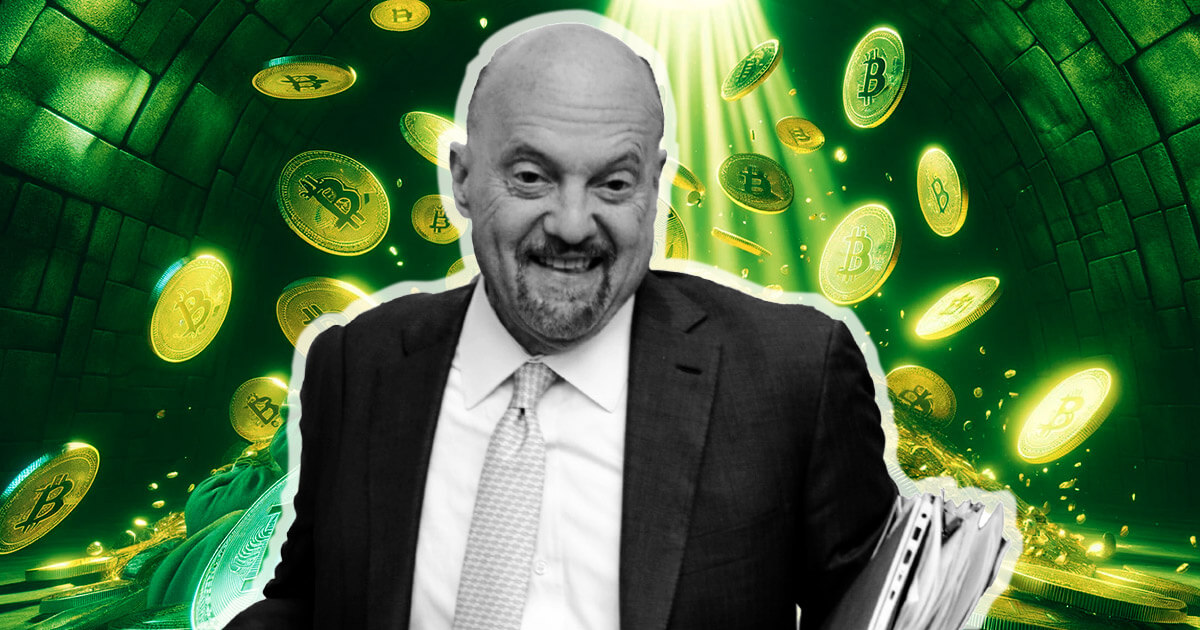
Jim Cramer, the outspoken host of CNBC’s “Mad Money,” recently sparked discussions in the financial community with his latest insights on Bitcoin, indicating a “big top” in the value of the cryptocurrency.
His tweet, which discussed insights from trader Larry Williams, deviated from his previous bullish comments on Bitcoin. However, the Mad Money host did not reveal the details of the conversation.
Cramer’s tweet also drew attention to a CNBC article discussing the differences between Bitcoin ETFs and traditional stock funds, specifically noting the lack of certain protections for Bitcoin ETFs under the Investment Company Act of 1940.
The commentary adds to the ongoing debate about the safety and nature of crypto investments compared to traditional financial instruments.
Oscillating displays
The financial commentator’s recent bearish turn on Bitcoin is in stark contrast to his previous bullish stance, in which he praised the cryptocurrency as a “technological marvel” and acknowledged its resilience and high price.
Just a week earlier, Cramer had praised Bitcoin’s strong market performance, but within days his stance changed significantly.
The Mad Money host has changed his opinion on Bitcoin three times in the past three weeks, with his bullish sentiment only lasting about a week from January 2 to January 9. The latter statement is more in line with Cramer, who has long been a critic of Bitcoin and cryptocurrencies.
This swing in Cramer’s opinions has been a point of concern and debate among investors and market analysts. While his views are highly influential in the mainstream financial media, the impact of his advice on Bitcoin’s actual market dynamics appears minimal.
‘Reverse cramer’ effect
Intriguingly, Cramer’s commentary on Bitcoin and other financial matters has led to what some in the crypto community are calling the “reverse Cramer” effect.
This term describes a phenomenon where some traders and investors often view market forecasts as counter-indicators. For example, when Cramer expresses bullish sentiment, it can lead some to anticipate a downturn, and vice versa.
Some have even gone so far as to create an “Inverse Cramer ETF” that regularly bets against its analysis. The ETF is currently down about 11% since its inception in March 2023.
This effect highlights the complex and sometimes contradictory relationship between public commentary and market movements, especially in the highly volatile crypto sector. It suggests that while public figures can influence market perceptions, actual market movements can go against these predictions due to various underlying factors and investor psychology.
As market observers and investors digest Cramer’s latest insights, there is increasing interest in understanding how his opinions could influence broader market trends in the crypto space.
Given the industry’s known volatility and sensitivity to various factors, including regulatory changes and global economic conditions, the actual impact of such forecasts remains a subject of speculation and debate.

